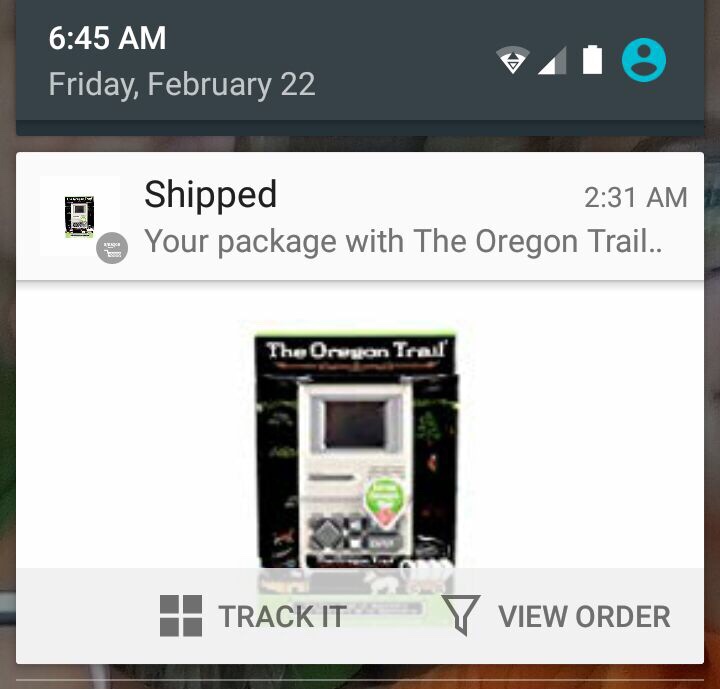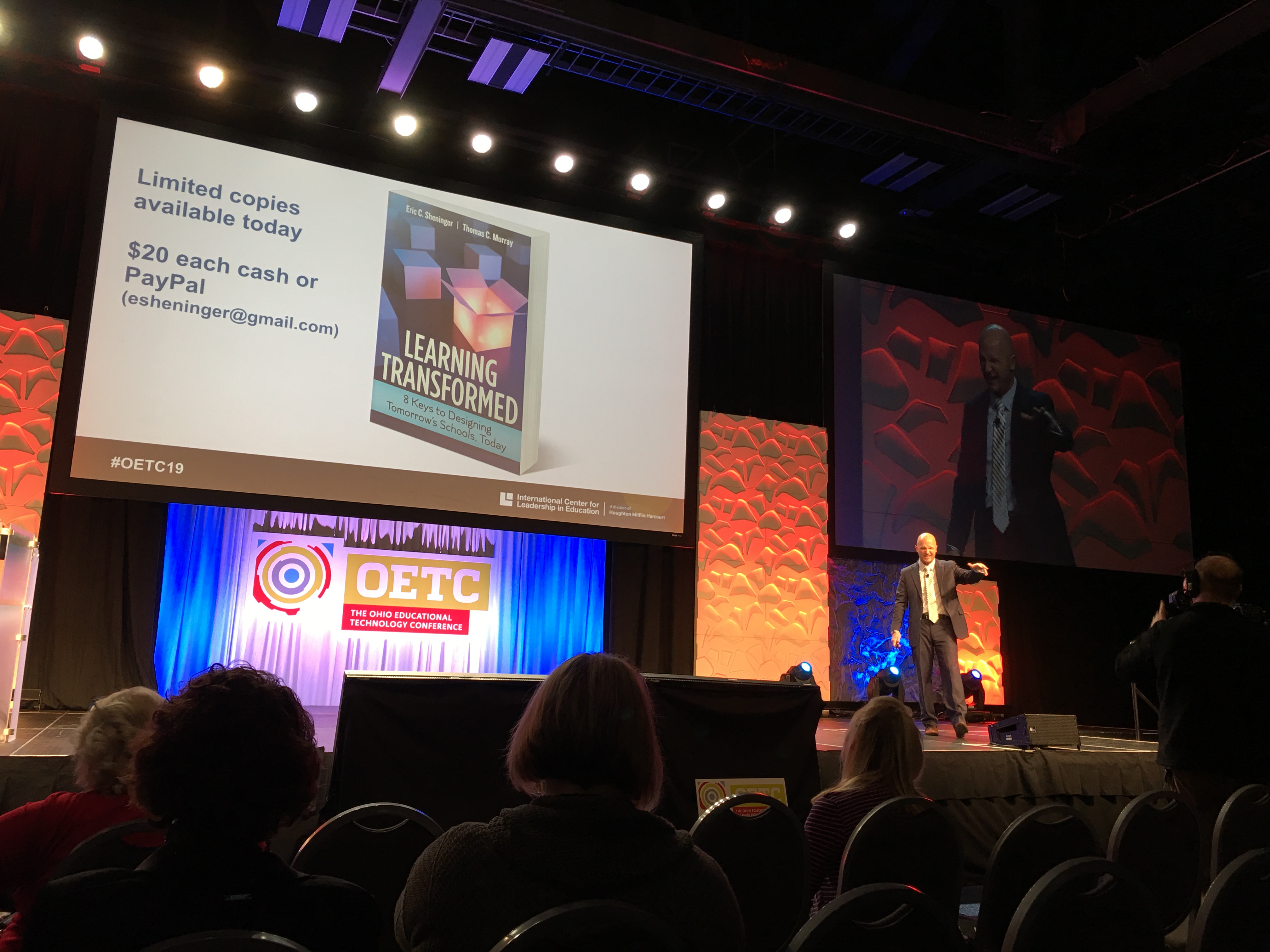
Author: ryan
-
Finished Run, Treadmill, 1292 calories, time 1:49:52, distance 10.00 miles, average 10:59 /mile.
Finished Run, Treadmill, 1292 calories, time 1:49:52, distance 10.00 miles, average 10:59 /mile.
-
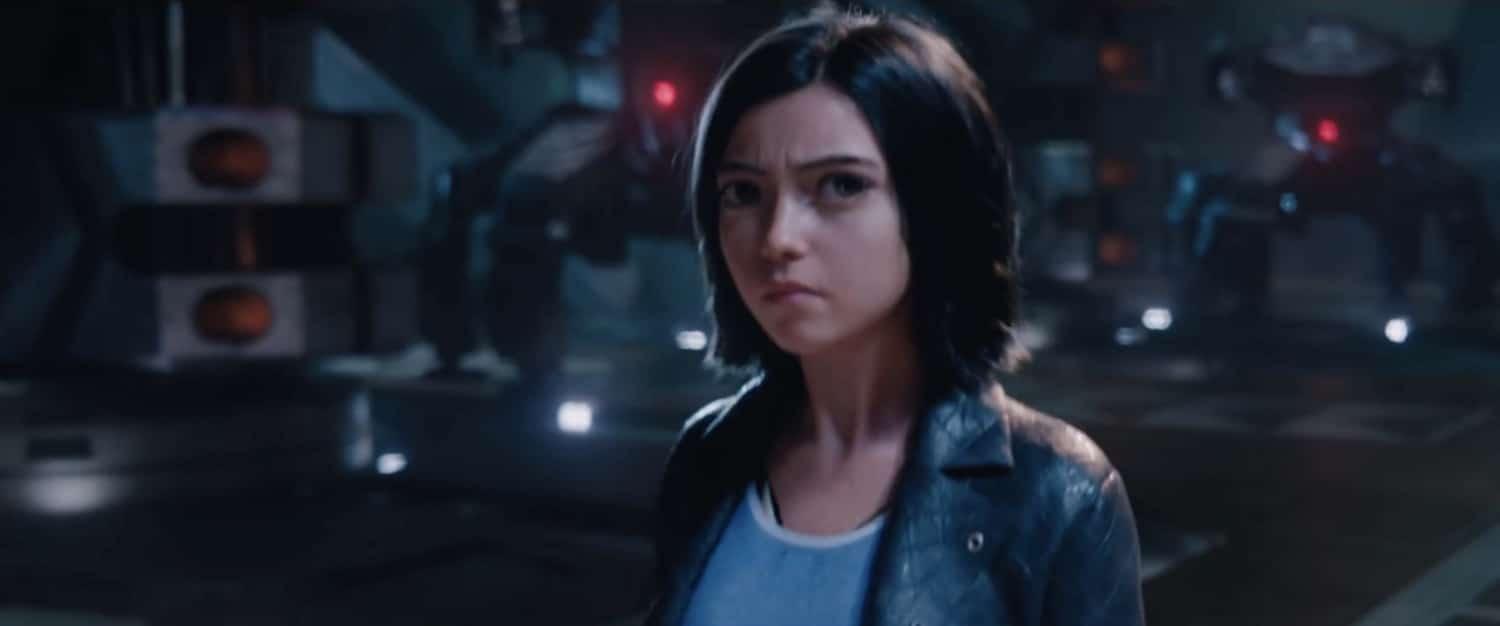
Goz reviews Alita: Battle Angel
My movie and TV reviews are spoiler free, I’ll only give away what is in the trailers. The comments are the wild wild west, anything goes there.

Here is Alita doing her Jessica Jones impression. It’s a week late, but I finally got to go see Alita: Battle Angel. I went in to the movie knowing basically nothing about the series, and learned from the trailers that Alita was a robot found in the junkyard by Christoph Waltz. This is an ambitious movie, way too ambitious to do the world building justice. The movie makers should have attempted a smaller story for the movie. Right now there is a lot going on to bring the viewer up to steam, which distracts from the story arc.
The movie takes place in Iron City, which is below a floating city named Zalem. Apparently, keeping your limbs is quite a challenge in the city since it seems that almost everyone is a cyborg with synthetic limbs. Instead of the gladiators in the coliseum, the people of Iron City watch a game called motor ball. It is some sort of roller derby with a lot more destruction.
The cast is top notch, I’ll watch anything with Christoph Waltz in it (even Downsizing). The actor who plays the love interest Hugo is meh, and the don’t give Jennifer Connolly enough. She’s great with what’s given, but her talents are wasted. That’s not the biggest disappointment though, that honor goes to Jackie Earle Haley.
For those that may not remember, Jackie Earle Haley was incredible as Rorschach in Watchmen. Here? I didn’t even realize he was in it until I saw the credits.
Most of the special effects are great, but the insertion of Alita is jarring in several scenes. You don’t get a sense of physicality from her, just CGI. The more normal looking human cyborgs look great, but as the cyborgs look more and more like robots, the uncanny valley sets in and pulls me a little bit out of the movie. Alita’s big eyes didn’t distract me as much as the rest of her CGI created body.
I’m redoing my ratings system for movies starting with this one. Instead of giving a number or a star, I’m going to give a “should you watch it” and if so, where? Alita: Battle Angel is rated Matinee, go see it on the big screen, but don’t bother with the price of an evening showing.
-
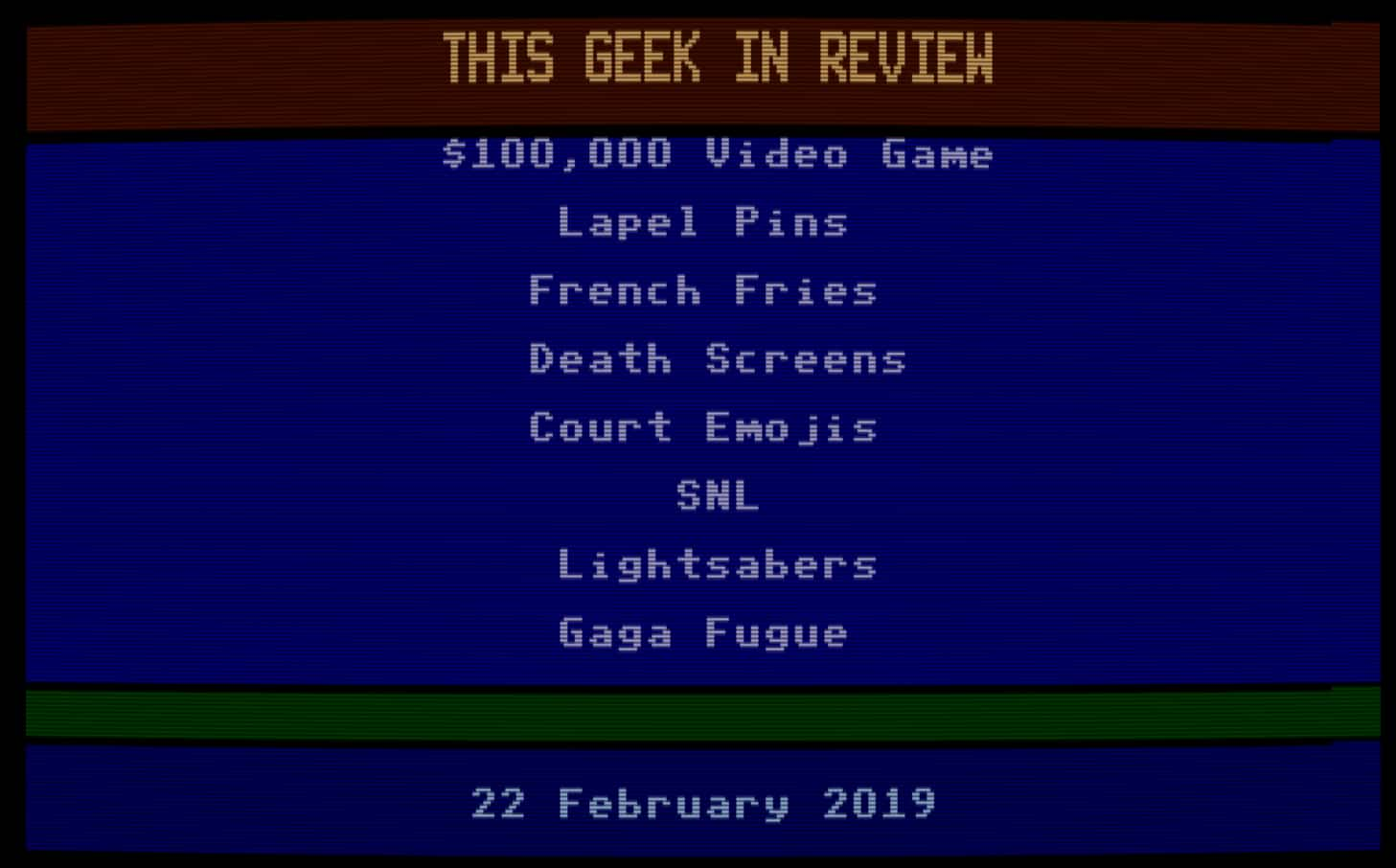
$100,000 video games – This Geek in Review for 22 Feb 2019

Retro video game collecting will never be up there with art, but sometimes it gets pretty close, such as this unopened copy of Super Mario Bros. for the NES. What makes this copy special, besides the unopenness, is the fact that it is from the first batch released in the United States. It’s not shrink wrapped, instead it is sealed with a sticker.
Do you like geeky lapel pins? Then maybe you should browse through the selection of enamel lapel pins by pinsanity. There are several very cool pins, especially some from The Office.
Last week was the research into how long you have to eat French fries, this week its all about quality. Surprising how high up Del Taco is, being from Ohio, I assumed Del Taco was just a poor man’s Taco Bell. It is depressing that only one fast food restaurant offers the best type of French fry, crinkle cut.
Sierra games created a ton of games, and so naturally, someone had to create a website where you can make customized death screens. Too bad it’s not an app.
People send each other emojis all the time, but when a crime is committed, courts are struggling with the intent implied by emojis..
Sometimes watching guest stars on Saturday Night Live is very distracting by their reliance on cue cards. Here is a fascinating look at those cue cards.
Geeks are already creating their own video game leagues, but what happens when geeks want to compete in a more physical way? They bring out the lightsabers!
Imagine Lada Gaga’s Bad Romance as a fugue. Actually, you don’t have to imagine it because we live in a world where it exists.
-
Finished Run, Treadmill, 1699 calories, time 2:20:46, distance 13.00 miles, average 10:50 /mile.
Finished Run, Treadmill, 1699 calories, time 2:20:46, distance 13.00 miles, average 10:50 /mile.
-
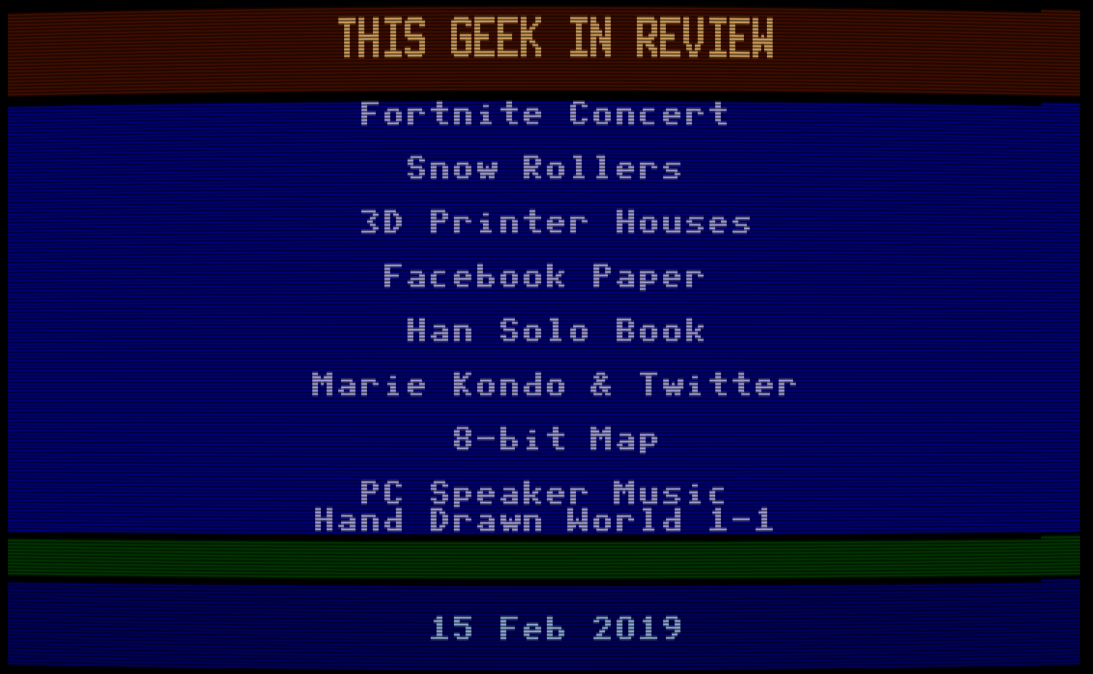
Fornite concerts – This Geek in Review for 15 Feb 2019

This past month Fortnite held a Marshmello concert in the game. I have to admit, watching a recording of the concert made me wish I had logged in to watch it live. When Marshmello asked for everyone to jump when he dropped the beat, and they did, I had goosebumps for some reason.
Weird weather in the UK with rare snow rollers spotted in field near Marlborough.
A company in Texas plans to sell the first permitted, 3D printed house.
A collection of memories of Facebook Paper. Facebook Paper was a really nice looking way to scroll through your Facebook feed, but they got rid of it anyway. Probably couldn’t track people in it well enough.
It’s another week, and we have another Star Wars book. This on is about Han Solo and looks really cool.
Who would have ever thought that a subtitled show about tidying up would spark so much joy? Well, how about applying the same technique to cleaning up your Twitter feed?
Cool looking 8-bit map of the USA.
In the beginning the only sounds created by a PC was those through the small motherboard speaker. Shiru8bit has released an album produced entirely on the PC speaker.
And I’ll leave you with this amazing hand drawn recreation of World 1-1 from Super Mario Brothers.




